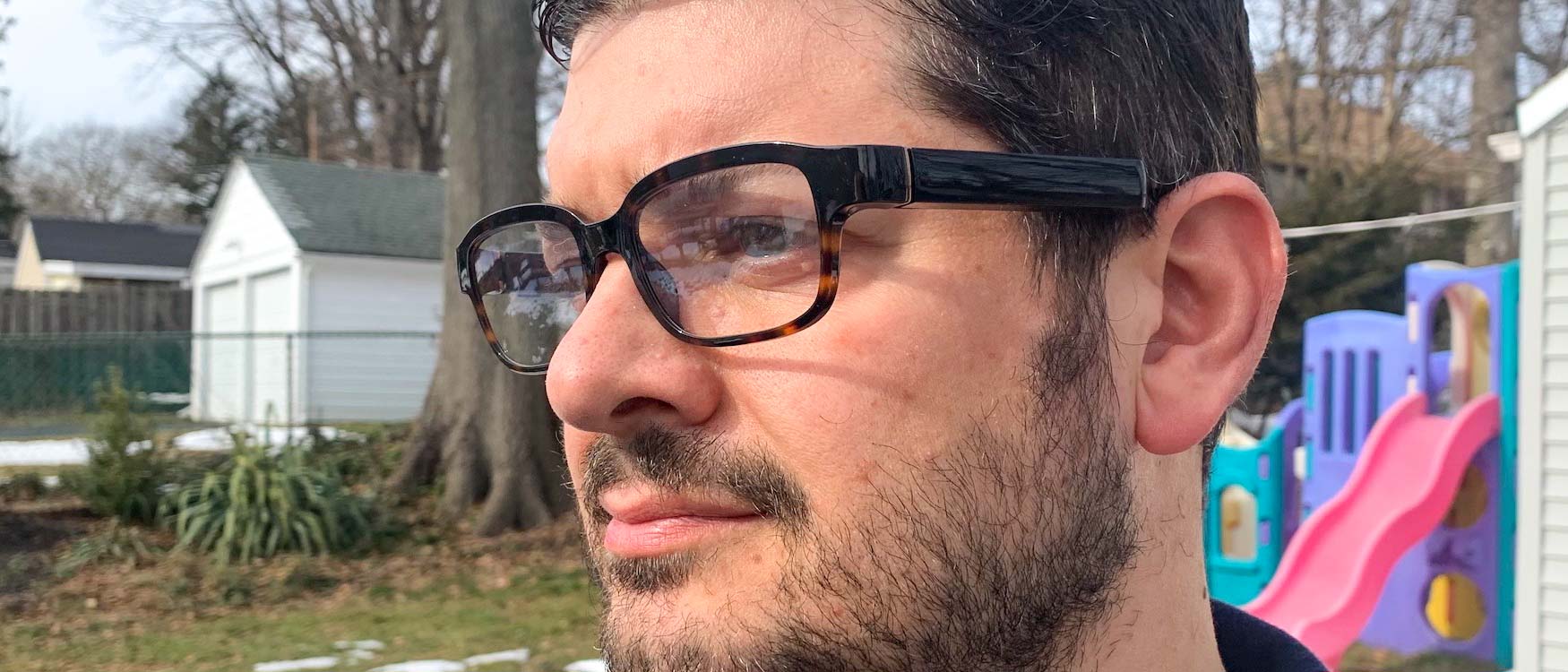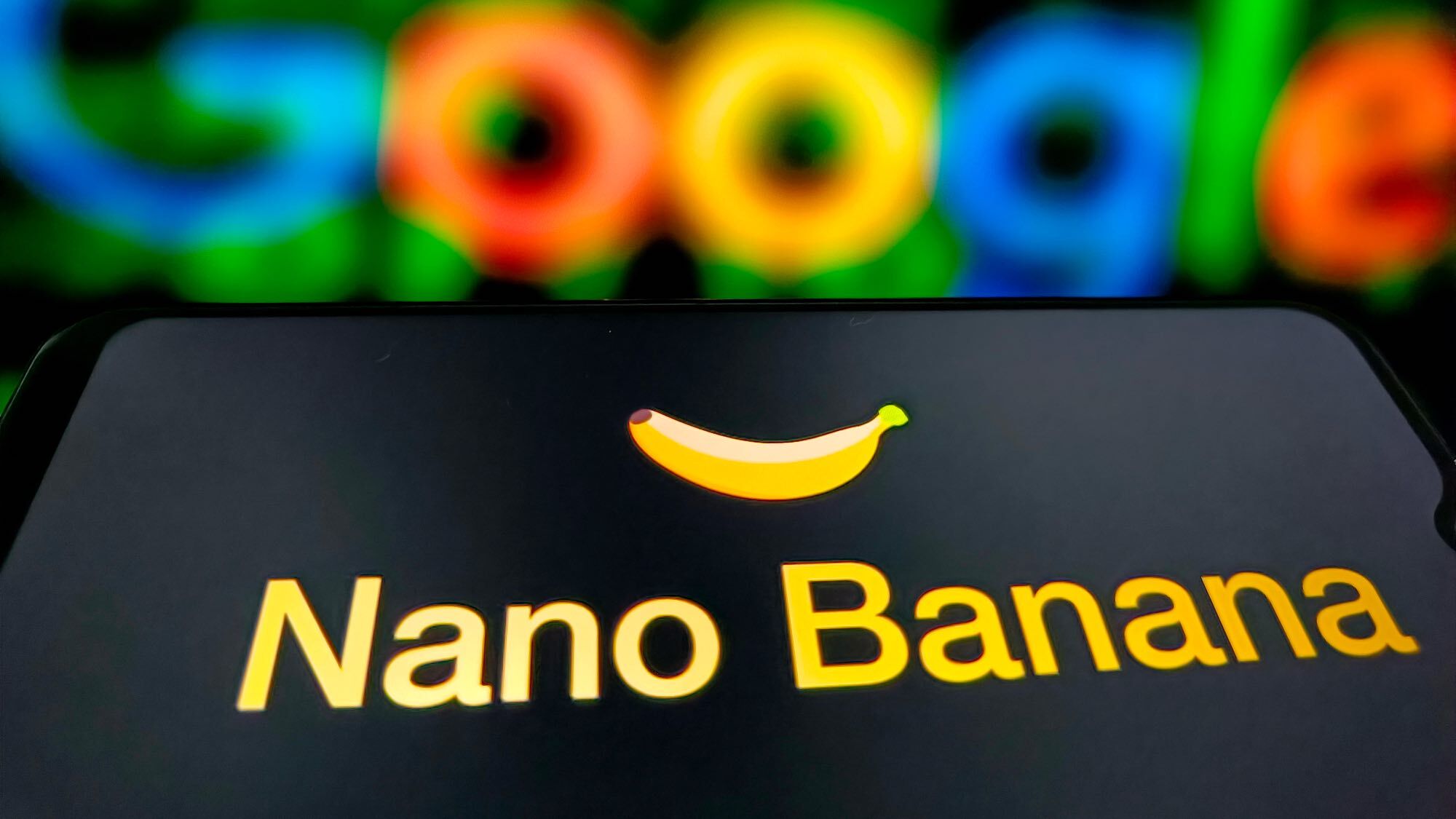Tom's Guide Verdict
The Echo Frames are a clever way to use Alexa, but the audio needs to improve.
Pros
- +
Comfortable to wear
- +
Hands-free Alexa
Cons
- -
Weak audio
- -
Plasticky design
Why you can trust Tom's Guide
Update: The Amazon Echo Frames (Gen 2) featured in this review have been replaced by a newer model. Read our full Amazon Echo Frame (Gen 3) review to learn more.
When I first tried on the Amazon Echo Frames, my first thought was, “why do we need Alexa in a pair of glasses?” Amazon’s assistant is already in smart thermostats, cars, even talking fish — to limited success. But, as I wore the $249 Echo Frames while walking my dog, working in front of my computer, and while I was out and about, I came to appreciate being able to do a number of things hands-free.
But while these specs further Amazon’s ambition to have its voice assistant everywhere, they could use a little more focus. Read on for our full Amazon Echo Frames (Gen 2) review to see why these glasses fall a bit short of their potential.
Amazon Echo Frames review: Price and availability
The second-generation Echo Frames cost $249, and are now available for anyone who wants to buy them. You can purchase them in black, tortoiseshell, or blue. The Echo Frames 2nd gen had a release date of November 2020.
Update (Oct. 2021): Amazon has updated the Frames with several new features:
Amazon Echo Frames review: Design
The second-generation Echo Frames look better than Google Glass and some other smart glasses, but have a Warby Parker vibe — my wife said I looked like a 1960s-era rocket scientist. The Frames are now available not just in black, but tortoiseshell and blue, too.

Each arm of the glasses is a bit thick, to accommodate the speakers and other circuitry, but the part that hooks around your ears is thin.
Get instant access to breaking news, the hottest reviews, great deals and helpful tips.

On the right arm is a power button which also lets you turn the mic on the glasses on and off. Just behind it is a rocker switch that controls the volume of the speakers. Behind this is a small magnetic contact area where the charger attaches.

The outside of the right arm is touch-sensitive, and allows you to accept and reject phone calls via swipe and tap. It was fairly easy to use, but I wish there were a ridge or some sort of physical indicator to know when your finger was in the touch-sensitive area.

Overall, I found the Echo Frames, which weigh 1.09 ounces, comfortable to wear for extended periods of time. They were much more comfortable than the Vuzix Blades, and even the Focals by North.
They do come with a nice protective case, as well as a cleaning cloth. The Echo Frames come with clear plastic lenses, but you can get them fitted with prescription lenses.
Amazon Echo Frames review: Audio
The Echo Frames have four tiny speakers (two on each side) that use beamforming to direct audio to your ears. It’s similar to what Bose does with the Bose Frames, just not as good.

Audio from the Echo Frames was mediocre. After streaming some jazz tunes via TuneIn as well as rock, hip-hop, musicals from Spotify and podcasts from iTunes, the biggest thing I found lacking was bass, which deprived most tunes of their punch.
Bruce Springsteen’s Born to Run was extremely tinny; it felt like I was listening to a first-generation Echo Dot.
Bruce Springsteen’s Born to Run was extremely tinny; it felt like I was listening to a first-generation Echo Dot. I could make out all of Lin-Manuel Miranda’s lyrics in the Hamilton soundtrack, but vocals were compressed, and there was no lower range to back them up. The bass lines in Cardi B. and Megan Thee Stallion’s WAP were not nearly as wet as I’d like.
If you listen to music that doesn’t go too far in either extreme, you’ll have a mostly pleasant experience. Midrange tones were pretty good, and the stereo speakers gave the impression of distinct instruments.
I found setting the volume to around 60 percent was ideal, not just for myself, but also for my wife, sitting about 15 feet away in our attic-turned-office. Anything louder, and she could hear what was coming out of the speakers. It’s as irritating as if you were sitting in the same room as a kid playing a game on their parent’s iPhone.
Because of the Echo Frames’ open design, those around you are much more likely to hear what you’re listening to, especially if you’re playing something at a higher volume. That wasn’t the case with the Bose Frames.
Amazon Echo Frames Review: Phone calls
Phone calls made using the Echo Frames were pretty good. I simply asked Alexa to dial up one of my contacts; Amazon’s assistant first asked me which of my contact’s phone numbers I’d like to dial, and then she (it) made the connection.
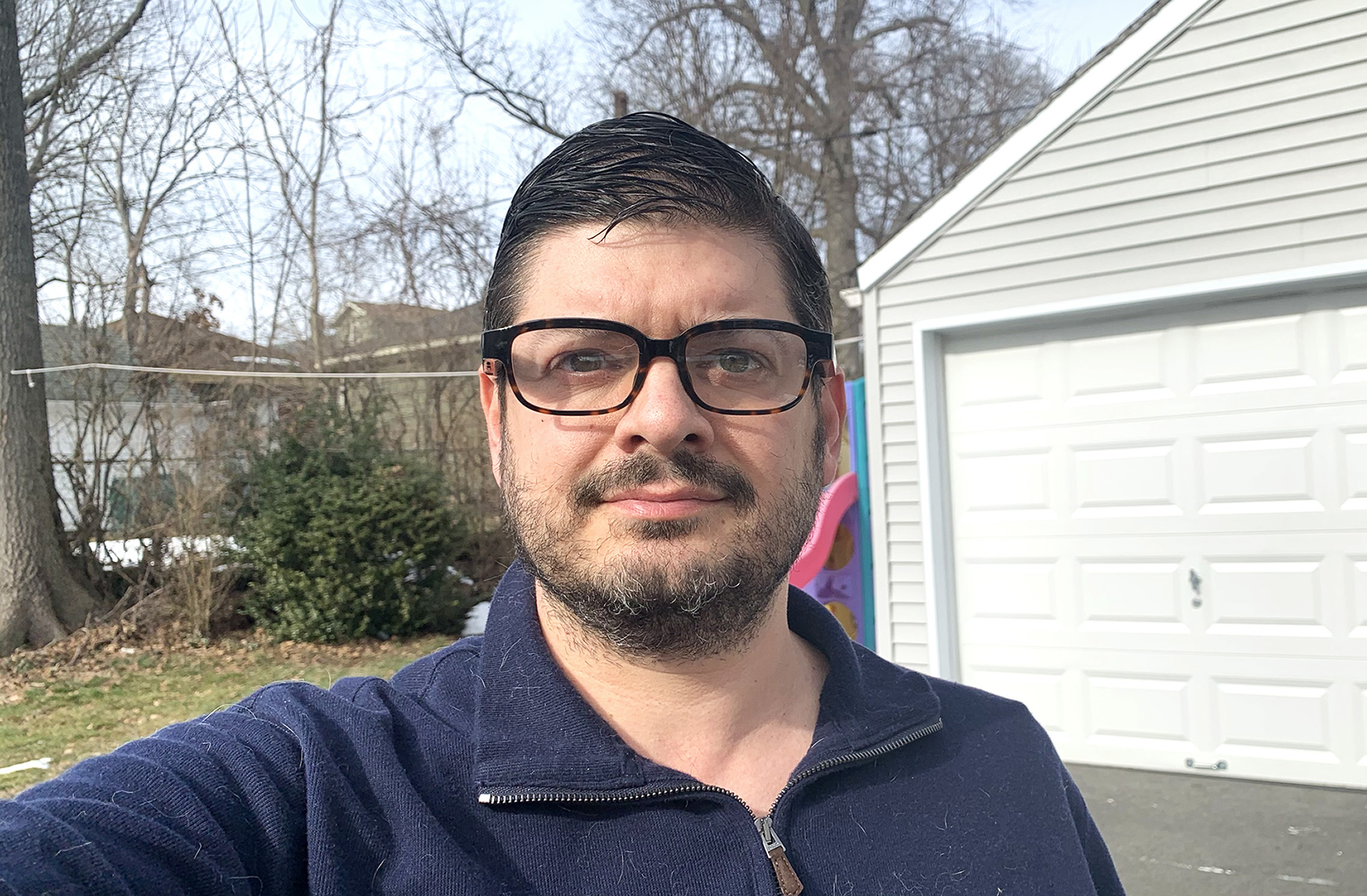
My wife could hear me clearly, even though I was outdoors on a windy day. (She did note that she could hear wind noises, though.) I could hear her well, though I did have to turn up the volume a bit.
Amazon Echo Frames: What you can — and can’t — do with Alexa
The Echo Frames aren’t the first smart glasses to have Alexa built in, so it’s a little surprising that Amazon hasn’t learned from those other devices to make its assistant more mobile-friendly.
When you summon Alexa, a small blue LED illuminates on the inside of the glasses, above your right eye. It’s subtle enough to not be distracting, but bright enough to let you know Amazon’s voice assistant is listening.
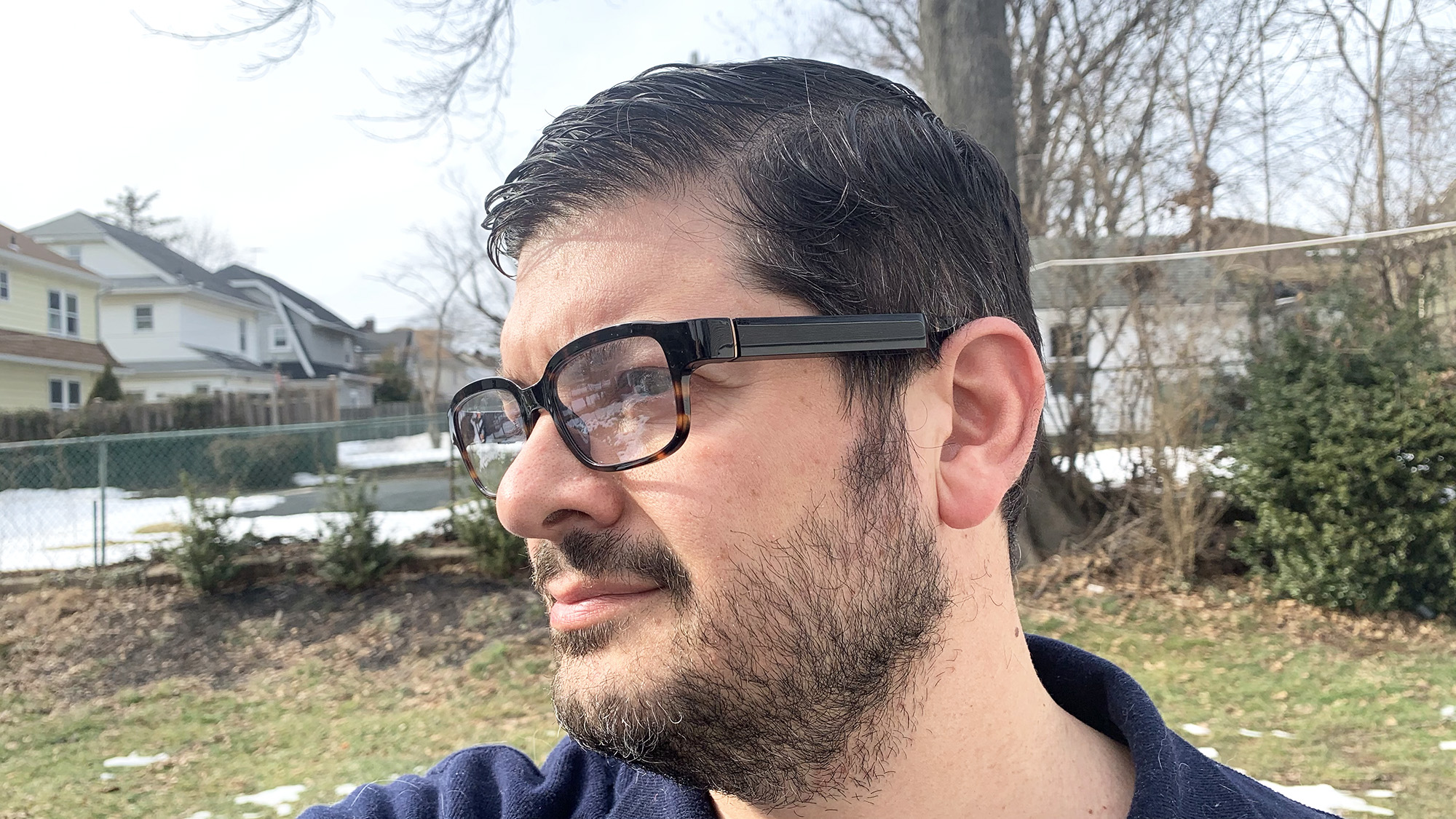
I found Alexa responsive, and especially liked that the Frames have Amazon’s ESP technology, which means that the Echo Frames — and not all the other Echo speakers scattered through my house — responded to my voice.
You can use Alexa in the Echo Frames as you would with any of Amazon’s other smart speakers, such as asking for news and weather, playing music, and controlling smart home devices.
Don’t want to use Alexa? iPhone owners can summon Siri, and Android smartphone users can call up Google Assistant by pressing and holding the touchpad.
Spoken turn-by-turn directions could be more seamless, but would require Amazon to invest in its own mapping service. (Why it hasn’t slapped 360 cameras on all its delivery vehicles yet is beyond me.)
While Alexa can find things such as local gas stations and pizza places, it doesn’t have a native mapping service, so it falls back to either Siri and Apple Maps if paired with an iPhone or Google Assistant and Google Maps when paired with an Android smartphone.
If you’re using it with an iPhone, you have to tap “Start Navigation” on your phone to get things going, an extra step.
Using the Echo Frames for navigation may seem extraneous if you’re driving in your car, but they come in handy if you’re walking or biking around somewhere unfamiliar, and don’t want to keep pulling out your phone for directions.
Amazon Echo Frames: Battery life
Amazon says that with intermittent use and the volume set to 60 percent, the Echo Frames will last up to 14 hours. If you’re using them to call someone, you should get two hours of talk time. If you’re playing music constantly at 80 percent volume, they should last up to four hours. I found the latter to be pretty accurate. Depending on how much you like to listen to tunes and make phone calls, you could get through a whole day without having to recharge the specs.
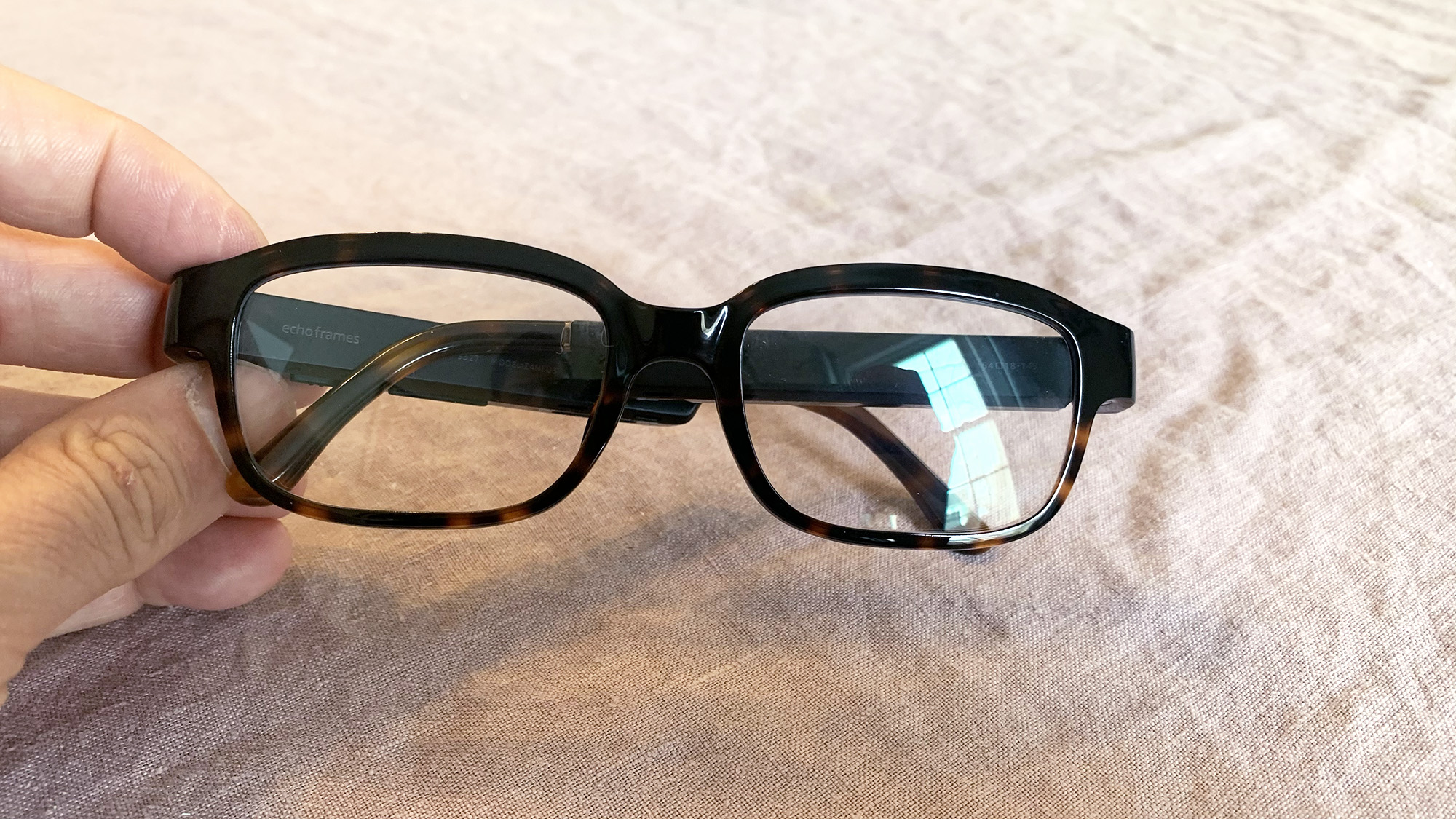
The Echo Frames charge up to 60 percent in about 20-30 minutes, and fully charged after about 75 minutes. They come with a proprietary USB cable that magnetically attaches to the right arm.
Update (Oct. 21): Amazon has updated the Frames with a new sleep mode. They will now automatically turn on when you put them on, and go into a low power mode once you take them off and turn them upside down.
Amazon Echo Frames review: Verdict
While you can find Amazon’s assistant in almost any smart device, it’s not always clear what purpose Alexa serves in those gadgets.
In many ways, the Echo Frames are trying to accomplish the same function as a smartwatch; they let you access most functions of your phone without having to pull it out of your pocket. To that end, they’re fairly successful. You can listen to music, make phone calls, and search and find things without disrupting whatever else it is you’re doing.
However, the Echo Frames need to sound a lot better before I’d shell out $250. If your main purpose for picking up a pair of smart spectacles is listening to music, the Bose Frames are the pair to get. But, if the idea of Alexa on your face is intriguing, then the Echo Frames are worth a look.

Michael A. Prospero is the U.S. Editor-in-Chief for Tom’s Guide. He oversees all evergreen content and oversees the Homes, Smart Home, and Fitness/Wearables categories for the site. In his spare time, he also tests out the latest drones, electric scooters, and smart home gadgets, such as video doorbells. Before his tenure at Tom's Guide, he was the Reviews Editor for Laptop Magazine, a reporter at Fast Company, the Times of Trenton, and, many eons back, an intern at George magazine. He received his undergraduate degree from Boston College, where he worked on the campus newspaper The Heights, and then attended the Columbia University school of Journalism. When he’s not testing out the latest running watch, electric scooter, or skiing or training for a marathon, he’s probably using the latest sous vide machine, smoker, or pizza oven, to the delight — or chagrin — of his family.
